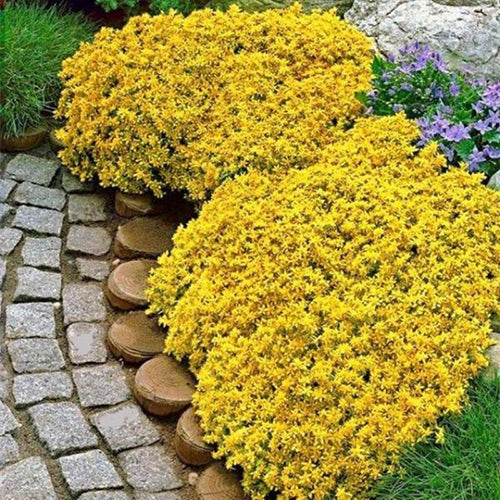
How To Grow Sedum From Seeds
Share
What is Sedum Plant?
Sedum is a genus of flowering plants that belong to the Crassulaceae family. These plants are known for their succulent leaves and beautiful flowers. Sedum is commonly found in North America, Europe, and Asia, and it comes in a variety of shapes, sizes, and colors.
Growing sedum from seeds is a rewarding experience that allows you to have a wide variety of sedum plants in your garden. It is a cost-effective way to expand your collection and experiment with different species and hybrids.
Additionally, growing sedum from seeds gives you the opportunity to witness the entire life cycle of these plants, from seed to mature plant.
Does sedum prefer sun or shade?
Sedum thrives in full sun, but can withstand partial shade as well. For regions experiencing prolonged, chilly winters (Zone 5 and below), it's advisable to plant Sedum in full sun to enhance its ability to endure the winter. While Sedum can flourish in nutrient-poor or sandy soil, ensuring proper drainage is crucial to prevent fungal infections.
How to Grow Sedum from Seeds
1. Direct Sowing or Sowing in Trays: You can choose to sow sedum seeds directly into the garden soil or start them indoors in trays. If you choose direct sowing, it will likely pick up weed seeds, etc, and those will germinate and grow much faster than the sedums.
2. Prepare the soil: If sowing indoors, fill trays or pots with a well-draining seed-starting mix. Mix equal parts of potting soil, sand, and perlite to create a suitable growing medium.
3. Pre-Moisten the Planting Medium: Before sowing the seeds, make sure the planting medium is evenly moist but not waterlogged. This ensures that the seeds have sufficient moisture to begin germinating once planted.
3. Sow the seeds: Sprinkle the sedum seeds evenly over the soil surface. Lightly press the seeds into the soil, but do not cover them completely. Cover the tray with glass, or a clear plastic wrap for two to three weeks until seedlings appear, and then remove the cover.
4. Provide proper lighting: Place the trays or pots in a bright location with indirect sunlight such as a south-facing window or a greenhouse. Sedum seeds typically require light to germinate, so providing adequate light is essential for a successful germination.
5. Water regularly: After sowing, water the soil lightly to settle it around the seeds. Use a fine mist or a watering can with a gentle shower head to avoid displacing the seeds. Keep the soil moist but not waterlogged. Use a spray bottle to mist the soil whenever it feels dry to the touch.
Maintain Moisture: Check the soil moisture regularly and water as needed to keep it from drying out. However, avoid overwatering, as excessive moisture can lead to seed rot or fungal issues.
6. Transplant the seedlings: After six to eight weeks, when outdoor temperatures are suitable, slowly introduce the seedlings to direct sunlight outside. Begin with 30 minutes to an hour of sun exposure, then bring them back indoors. Gradually extend the time spent in the sun by 30 to 60 minutes each day until the seedlings are accustomed to the duration of sunlight they'll receive after transplantation.
Once they're acclimated, it's time to permanently relocate them to their new spot. Ensure you use sterile tools and materials for this task.
Tips for Successful Sedum Growth
- Choose the right sedum species for your climate and growing conditions.
- Sedum thrives in full sun – or at least six hours of direct sunlight per day for better growth.
- Water sedum plants sparingly, as they are drought-tolerant. Provide adequate drainage to prevent root rot.
- Fertilize sedum plants with a balanced, slow-release fertilizer in the spring.
- Prune sedum plants in the early spring to promote bushier growth.
Is Sedum invasive?
Despite their rapid spreading nature, sedums are non-invasive. Their shallow root systems make them simple to lift and relocate.
Conclusion
Growing sedum from seeds is a rewarding experience.
In summary, patience, proper watering, and keeping it isolated from other potential seeds are key.
By following the proper techniques and providing the right conditions, you can enjoy a stunning collection of sedum plants in your garden.
Whether you're a beginner or an experienced gardener, sedum is a versatile plant that will add beauty and interest to any landscape.

